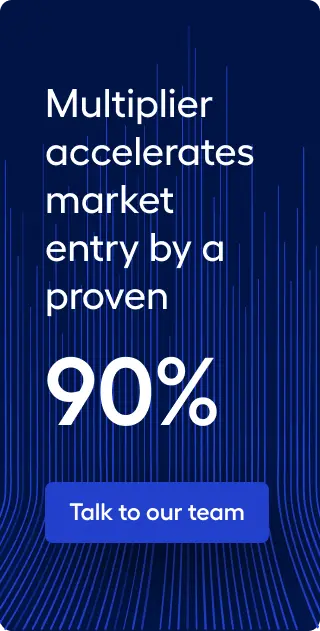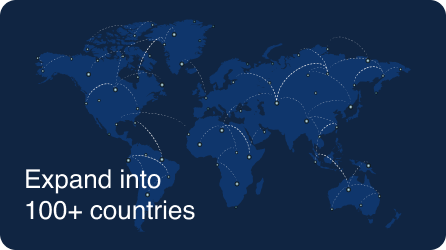What is Digital Onboarding?
Digital onboarding is onboarding using digital tools and platforms. It refers to the set of digital activities such as orientation and online training that are carried out to effectively educate workers on the company’s goals, work culture, the scope of work, etc.
For several decades, onboarding meant filling out an avalanche of paperwork. However, over the past few years, the purpose of onboarding has become two-pronged; creating a lasting pro-worker impression on the first day and making the worker feel at home within the company.
This begs the following question.
When Does the Onboarding Process Begin?
A number of theories float around. Employees who highly value employer branding and experiences believe that onboarding begins from the day you post the job description. Hence, they optimize all touchpoints that lead to the company. Others believe onboarding begins on the first day of work.
Challenges in Traditional Onboarding
Whereas digital onboarding is inducting an employee through digital tools and platforms, traditional onboarding happens in person.
Each has its own share of unique experiences and positives.
However, certain challenges pit traditional onboarding as a poor contender against online onboarding.
FORMS AND FORMALITIES
Onboarding an employee in person requires you to print and evaluate piles of paperwork. In particular, when hiring a contractor, there are several compliance and labor laws that may require added attention. Printing costs and storage costs are unnecessary expenses to your company given the digital onboarding alternatives.
TIME AND OPPORTUNITY COSTS
Traditional onboarding requires you to take time off your ever busy schedule to prepare paperwork, set up training sessions and in-person orientations. In addition to this, you will have to fulfill your HR functions as well. The time wasted and consequent opportunity costs impacts your productivity and company goals.
INFORMATION OVERLOAD
The employee onboarding processes in most companies that are up and running now, place value only on carefully navigating through the paperwork.
Most companies don’t pay attention to a plethora of activities post-completion of these formalities. New hires are left to learn and train on their own. This leads to feelings of social isolation.
This taxes the new employee. It creates information overload and anxiety. Particularly if the employee has to jump onto tasks and deliver results quickly, a traditional onboarding process may only add anxiety to an already isolated person.
Benefits of an Effective Digital Employee Onboarding
INTEGRATED SOLUTION
Effective digital onboarding happens when all the activities starting from paperwork to training are completed online. In such cases, the entire onboarding process happens on one or two platforms.
Filling forms, training, and orientation are availed from one unified platform.
This protects the new hire from frantically searching for information all over the place, which emanates from a traditional onboarding.
SAVE ONBOARDING COSTS AND TIME
A digital employee onboarding process cuts down costs considerably by reducing printing costs, manual labor, human presence, etc.
You can also save on training costs by shifting sessions to virtual platforms. Instead of hiring mentors and assigning employees to train your new hires, digital onboarding offers self-paced training modules as a solution.
Moreover, digital employee onboarding saves your new hire’s time by helping them to wrap up paperwork quicker and get started with the tasks at hand.
It also enables you to spread out paperwork over the first few days. This allows your new hire to gain experience on the job and leaves more time to socialize with colleagues.
EMPLOYEE-FRIENDLY ONBOARDING
This is why digital onboarding is an employee-friendly solution.
Firstly, digital employee onboarding expediates paperwork. Secondly, it makes learning self-paced. New hires can take training at a pace of their own. With information stored on an online portal or an intrasite, they can access materials whenever needed.
From an employee perspective, you can track the completion of an employee’s onboarding when it is a digital process. It also helps you consistently update training material, policies, procedures, forms, etc. Moreover, this protects your employee from any form of information overload.
COMPLIANCE FRIENDLY ONBOARDING
Another important benefit of digital employee onboarding is its compliance-friendliness.
Navigating through a lot of compliance and legal documents is an upskill task. Digital onboarding has all the documents in one place for you to view and sign off with ease.
Solutions like Multiplier are some stellar examples of digital onboarding software which can aid in local and regional compliance when you work with remote employees.
Digital onboarding process
Did you know that 1 in 3 enterprises do not have a digital onboarding system in place? The benefits of digital onboarding are endless. Particularly for penurious startups, digital onboarding endows monetary benefits and opportunity costs.
Despite these advantages, many are slow to migrate to digital employee onboarding.
So, how do you implement this process and save several thousand bucks for your company?
Follow the steps below.
BEGIN WITH PREBOARDING
A digital onboarding process begins with a seamless preboarding experience. As a matter of fact, every onboarding experience begins with a good preboarding.
Preboarding is every activity involved until the new hire officially begins their first day. Preboarding might seem like a basic task until you actually carry it out.
A preboarding involves you setting up email accounts, creating access for your employee, etc. Make sure you send the necessary tools and devices as well. Also, develop training modules for your new hire.
RESEARCH ON BEST PRACTICES
Once your employee signs the dotted line, you can begin with research.
As a first step, audit existing onboarding practices. Do a SWOT analysis.
Map out strengths, weaknesses, opportunities, and threats. Identify weak areas and improve on them. Quickly capitalize on opportunities. Eradicate threats that may demoralize your employee’s motivation.
MAP THE ENTIRE PROCESS
Once you have identified the above areas, focus on the different stages of your existing onboarding process.
Map out the entire process and create a workflow. Identify the steps to be completed on the first day.
Create a schedule for the other steps. Break them up across a few days or weeks based on the scope of your new hire’s job.
AUTOMATE TASKS
One of the best parts about using digital tools and platforms is that you can automate several tasks.
If you have mapped your entire process before the new hires enter the workforce, you can automate several tasks such as sending offer letters, setting up reminders for your new hire, etc. This would streamline the workflow.
Besides, you could define conditions upon which the workflow changes. You can set up rules which change the flow of the onboarding process based on the progress of the new hire. You could block your new hire from accessing certain parts of the onboarding until your new hire completes certain prerequisites.
CREATE OPPORTUNITIES TO COLLABORATE ON THE FIRST DAY
A digital onboarding shouldn’t shun the new hire away from all forms of human communication.
Collaborative learning sessions are a wonderful way to go about doing this.
Create a discussion forum of a bunch of new hires to help your new hire form meaningful connections with other new hires. New hires can be encouraged to ask any question here. You could assign a subject matter expert who would curate these discussions and answer questions.
These questions themselves can come together to form a repository of information. Thus the forum becomes a cutting-edge repository of information with expertise and valid questions.
TAILOR THE BEST DIGITAL ONBOARDING EXPERIENCE FOR EVERY HIRE
The best part about moving to a digital platform is that you can tailor individual experiences. Many companies these days are one step ahead. They create offer letters that categorically mention that new hires get a personalized onboarding experience.
Although the preboarding may be the same for several of your new hires, you may need to customize training and instructional content. Obviously, each role is unique. Customized learning paths are a necessity more than an obligation.
The best part about digital onboarding is that training modules can be customized, learning can be made self-paced and knowledge bases can be updated almost instantly.
TRACK THEIR PROGRESS
Amidst the excitement and thrill, new hires may get distracted from the process. Digital onboarding requires new hires to be self-motivated and proactive in taking initiatives.
However, slacking off is human behavior. To keep them focused and engaged, make use of checklists.
Checklists help you keep track of your new hire’s progress. It also nudges the new hire to check off tasks. Boost the power of to-do lists by assigning deadlines to each task.
If you make use of project management tools to create the checklist, you can drop comments below tasks in the checklist. A personalized message now and then can motivate your new hire. This would also help you pass on “speed up” messages without being too nosy as a supervisor.
Digital onboarding best practices
As we saw above an effective digital onboarding has several digital touchpoints.
Also, digital onboarding isn’t all about the tools and platforms. It is one that simply takes advantage of digital onboarding tools to optimize every touchpoint a new hire engages with. Like any onboarding experience, the crux is always the experience of a new hire.
Here are some digital onboarding best practices.
ONBOARDING BEGINS BEFORE ARRIVAL IN THE OFFICE
Traditional, remote, in-person, or digital, onboarding has to begin even before the day your new hire steps foot into the office. You can email them the offer letter prior to their arrival. These days several companies are fighting tooth and nail for good talent. Lure your talent away from your competition by motivating them to sign over the dotted lines via an engaging preboarding experience.
BUILD A DIGITAL SUITE OF TOOLS
The digital age has endowed hiring managers with several tools for the best digital onboarding experience. Tools such as chatbots, emails, digital signatures, video conferencing tools, etc can help you seamlessly convey information and tutorials to your new hire.
There are also several tools in the market that help in planning your training and tutorials better. Content creation tools such as content management systems, podcasts, webcasts make learning self-paced. This better facilitates on-the-job training.
You could also audit and personalize the digital onboarding process by taking advantage of automated surveys and polls.
INNOVATE BY PERSONALIZING COMMUNICATION
Build engaging means of communication using quizzes, questionnaires, and other icebreakers to develop good meaningful relationships with your new hires. Gamify getting to know your new hire by investing in socializing platforms.
MAKE USE OF AUTOMATION
The power of automation allows you to create process workflows. Automation can help you streamline all the engagement your new hire has at various touch points within your organization.
Invest in SaaS-based platforms and automation tools to reduce the drudgery behind onboarding processes. For instance, you can automate sending the job offer once you have approved a candidate. After your new hire accepts the offer, you could automate subsequent coordination activities such as setting up meetings with the IT department, etc.
In-person onboarding infuriates your HR managers by forcing them through piles of paperwork. A digital onboarding process digitizes all documentation. This saves costs incurred for printing and copying these documents.
Multiplier’s Digital Onboarding Can Reduce Time to Hire by 90%
A really helpful digital onboarding platform should be strategically designed to unify all aspects of onboarding including paperwork, onboarding, payroll management, etc.
Multiplier is one such platform. It enables you to hire internationally without worrying about any compliance issues, local labor laws, local insurance, etc. This doesn’t mean we will allow you to float laws.
For instance, if you are based out of the USA and you need to hire someone from Singapore then you can onboard using Multiplier. Our local entities and legal partners help you hire compliantly without any risks.
Book a demo now!


